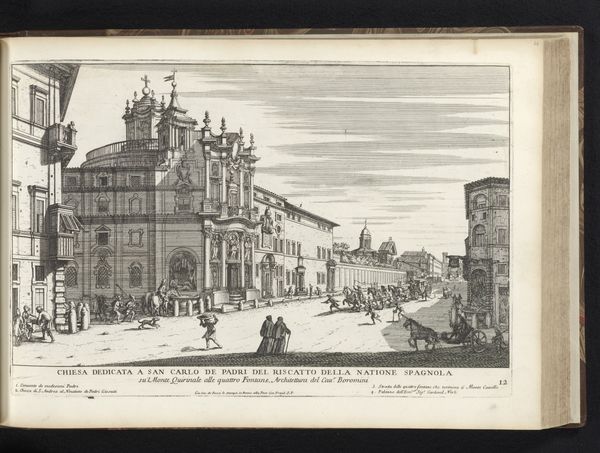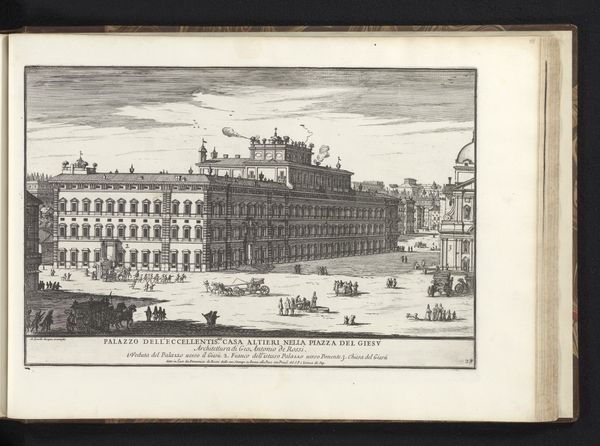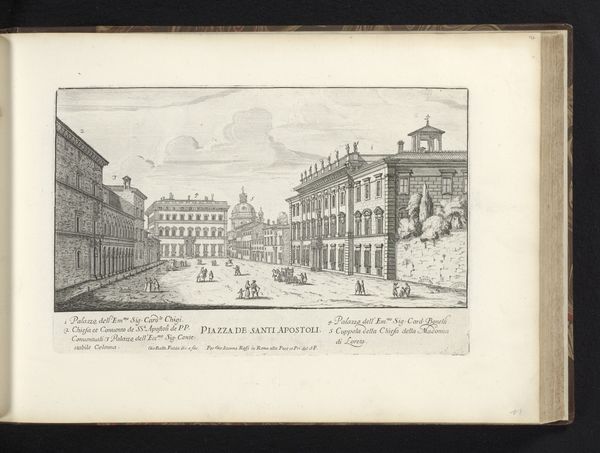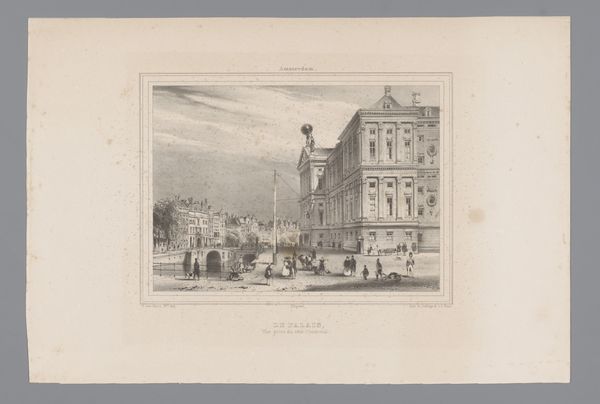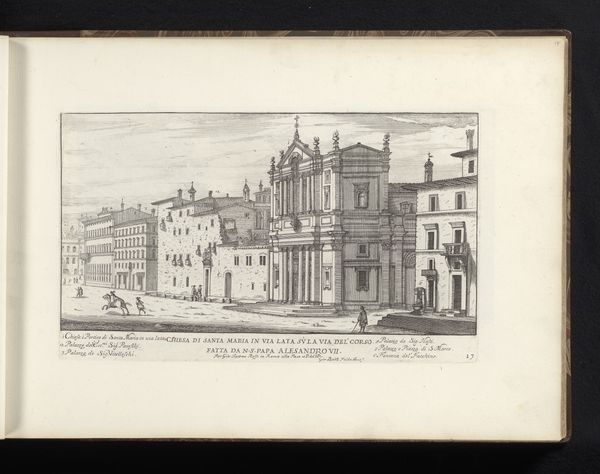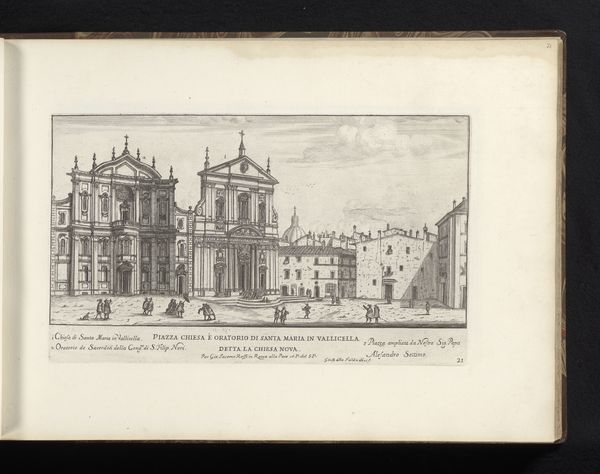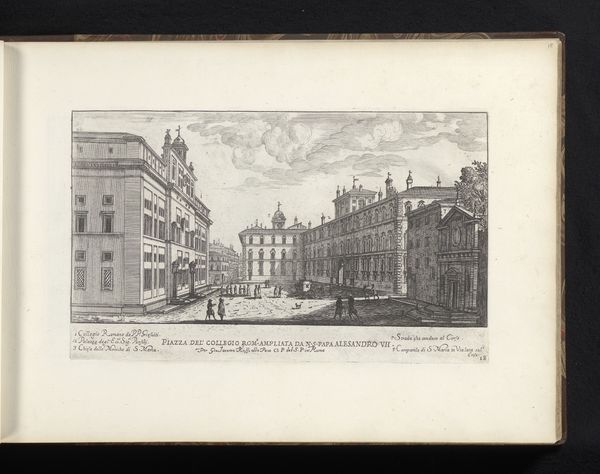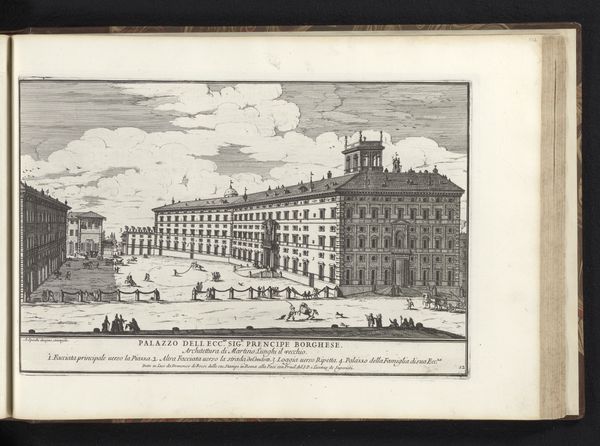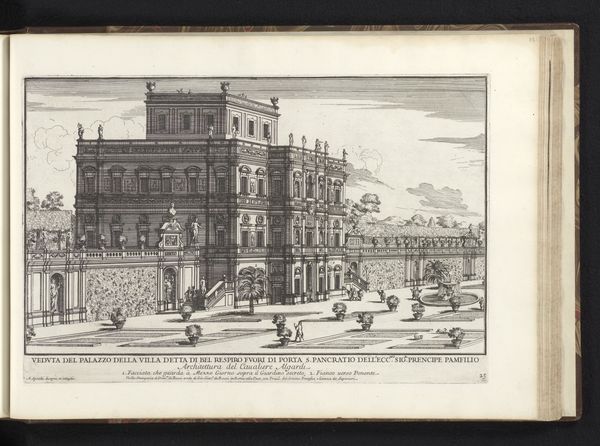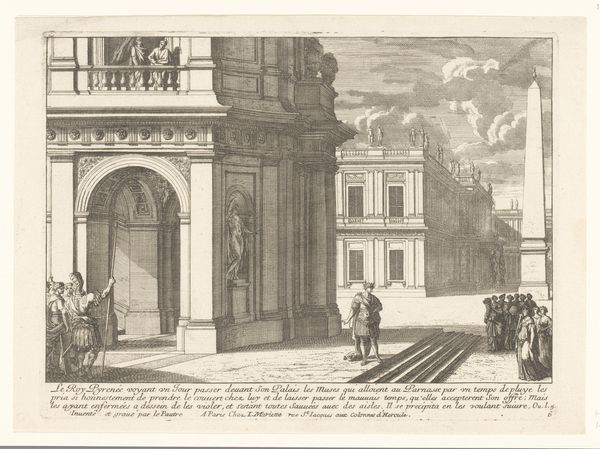
Fontana nella Piazza della Trinita de Monti (...), from "La Fontane di Roma nelle Piazze e Luoghi Publici (...)" 1691
0:00
0:00
drawing, print, etching, engraving
#
drawing
#
baroque
# print
#
etching
#
landscape
#
cityscape
#
engraving
Dimensions: Plate: 8 3/8 x 11 3/8 in. (21.3 x 28.9 cm)
Copyright: Public Domain
Editor: Here we have Giovanni Battista Falda’s “Fontana nella Piazza della Trinita de Monti,” an etching and engraving from 1691. It depicts a fountain in a bustling Roman piazza. It’s the crispness of the line work that really grabs me, especially in defining the fountain’s elaborate sculptural elements. What jumps out to you as you examine its formal properties? Curator: Indeed, the graphic precision is compelling. Note the sharp contrast Falda establishes through the confident hatching and cross-hatching. Consider how this technique defines not only the forms of the fountain, but also the architectural masses and the atmospheric recession into the distance. Does the linear precision create a sense of objectivity, perhaps even detachment, in the representation? Editor: Yes, definitely. There is a very geometrical feeling, especially how all elements are connected, almost architectural. Do you think that Falda focused less on portraying what he felt, and more on the spatial logic of the piece? Curator: Precisely. It eschews emotional subjectivity. Instead, attention is directed towards the interplay of lines and shapes to construct a visually coherent space. What is the effect of the low horizon line on the overall composition, and how does that affect the viewer's experience of space within the print? Editor: Because it's lower, it seems to make the architectural elements bigger. The structures really come forward and almost seem to surround the viewer. Curator: Notice how that reinforces the sense of designed space, organized by principles of perspective, where architectural elements articulate and measure the extension. This ordered configuration encourages observation of relationships, more than it stimulates participation, wouldn't you say? Editor: I agree. Focusing on that structured space really makes the composition legible and helps to clarify my experience of the work. Thank you! Curator: My pleasure. That focused observation is, after all, central to its aesthetic experience.
Comments
No comments
Be the first to comment and join the conversation on the ultimate creative platform.
